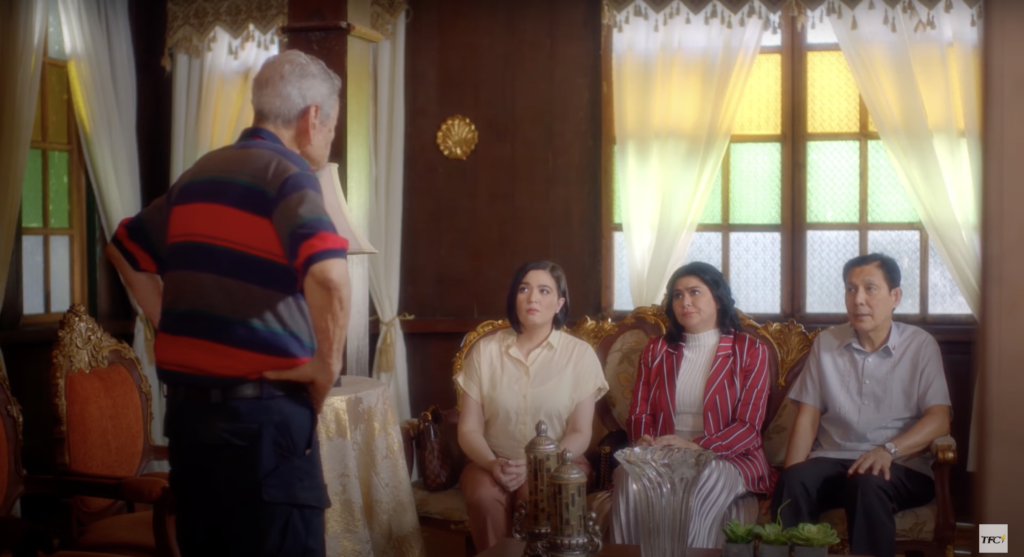5 movies that teach us key Filipino values

I am sure you know how wealthy the Philippine film industry is in terms of ideas, and how it has the potential to be so much more.
We are still in the process of cultivating our artistic man and woman power and pushing for the genuine support of the masses towards contemporary arts as a whole. Sure, the situation has been slowly improving, but you cannot deny that the lack of support is still there. And it exists in all forms of art.
Nevertheless, the industry continues to resist and produce quality pieces.
In highlighting our filmmakers’ fruits of labor, let us celebrate their works alongside Filipino Values Month, where such films are the often platforms of our culture.
Seven Sundays (2017) by Cathy Garcia-Molina

Director Cathy Garcia-Molina has produced various successful films in the past (and is continuing to do so), and a lot of her works scream quality and box office. However, there is something about Seven Sundays that struck a chord.
The film reflects the typical Filipino dynamics of sibling hierarchy, where the Kuyas Allan (Aga Muhlach) and Bryan (Dingdong Dantes) play a big role in their decision-making. Such strong characters like them undoubtedly clash, like most ates and kuyas in real life, because of sibling rivalry and insecurity. The only girl (Cristine Reyes) lies about the current state of her family affairs, and the bunso (Enrique Gil) faces the scorn and disappointment of the family because of a mistake he is not entirely at fault for.
We cannot forget how their father (Ronaldo Valdez) continued lying about his illness just so that he could spend more time with his family.
While showing the many issues a typical Filipino family faces, in the end, it depicted the value of being family-oriented. It showed how important it is to Filipinos to take care of their loved ones.
Minsa’y Isang Gamu-gamo (1976) by Lupita Aquino-Kashiwahara

Literally translated as “Once a Moth,” the film is about a nurse named Cory (Nora Aunor), who will do almost anything to go abroad and lift her family from poverty.
Cory turned a blind eye to both her grandfather’s dismay in her decision and the injustices of the Americans. She insisted on her dreams of going to the States, continuing to paint them in bright light; until her brother got shot by the Americans that mistook him for a wild boar. That incident opened her eyes to the reality of living in the US.
Her grandfather’s insistence on pursuing a career in her home and serving the country first is deeply rooted in the Filipino value of patriotism and utang na loob. We (at least most of us) have this urge to devote ourselves to the country as our ancestors did.
Rainbow’s Sunset (2018) by Joel Lamangan

The Philippines is a conservative country at its core, and although progressively improving in the present, we cannot deny that some are still reluctant to accept ideas.
And that’s why Rainbow’s Sunset is such a breath of fresh air. It combined the LGBTQ+ and the older generation, who are the most conservative of all.
The story revolves around an 84-year-old man named Ramon (Eddie Garcia) who comes out as gay to his children in his senior years. His decision to come out is mainly due to his lover, who is battling cancer.
Ramon, then, becomes torn between his duty to his family and his true love.
Aside from the value of family, the film also shows life and purpose, and happiness.
Anak (2000) by Rory Quintos

Josie (Vilma Santos) has to leave her children in the Philippines to work for a wealthy family in Hong Kong. It is the only way for her to get her family by.
Her children, however, do not understand why she has to go abroad and work. They thought that their mother abandoned them, especially when she did not return home when their father died.
When Josie returned home, it took a while for Michael (Baron Geisler) and Daday (Sheila Mae Alvero) to be comfortable around her. And even longer for Carla (Claudine Barretto), who completely resented her for leaving them for too long.
In the end, Carla realized why her mother had to leave. She also understood why she did not return at the death of her father too. She forgives Josie and changes her ways.
The film acknowledged the concept of family, work and livelihood, and acceptance.
Ang Tanging Ina (2003) by Wenn V. Deramas

Of course, aside from drama, what’s a Filipino movie list without comedy? The film series has three movies under its belt, but the first one deserves the spotlight.
Ang Tanging Ina is about Ina (Ai-Ai Delas Alas), a three-time widower and a mother of 12. She balances her role as an income provider and a mother who assists her family’s needs at home. And it’s taking a toll on her.
Her family, at first, doesn’t appreciate this and eventually gets overwhelmed by her efforts. She does whatever it takes to meet her children’s wants and needs. However, her children think that she causes more problems instead.
Still, Ina manifests an optimistic outlook, which eventually her children appreciate.
The film shows the importance of family, basic needs, and resilience.
What do you think?
These five movies are just some of the movies that showed our “being Filipino.” If you want more recommendations, you can take a look here.
Do you have your own recommendations? Let us know!
An avid reader and writer. What she reads, she feels; what she feels, she writes. Away from the eyes of the crowd, she engrosses herself in music, film, and design.






